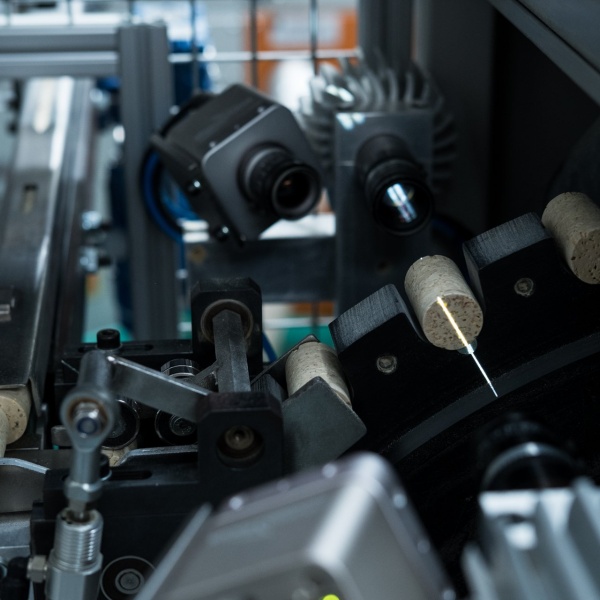For the production of technical stoppers, it is necessary to divide the process into three distinct phases: production of the natural cork discs - which are placed on the tops - manufacture of the agglomerated cork body and assembly of the stopper.
Disc production
The cork planks used to make the discs are selected and boiled using processes identical to those used to make cork stoppers. Subsequently, the two sides of the planks (the rougher, outer side of the tree - the back - and the side that is closer to the trunk - the belly) are cut so as to obtain soft, uniform sheets of cork about 6.5 mm thick.
These sheets are mechanically perforated into circles - disks the size of the tops of the corks to be made. The disks are optically sorted in order to divide them according to the established categories, usually 4 quality classes.
To clean them, the companies dedicated to this business have their own systems based on washing with purified water, heated to around 70º and without chlorine. After washing, the disks are dried and stored in silos until they are used.
These sheets are mechanically perforated into circles - disks the size of the tops of the corks to be made. The disks are optically sorted in order to divide them according to the established categories, usually 4 quality classes.
To clean them, the companies dedicated to this business have their own systems based on washing with purified water, heated to around 70º and without chlorine. After washing, the disks are dried and stored in silos until they are used.
Manufacturing the body
The body of the technical stopper is made up of granules produced from high quality cork by-products derived from blowing natural stoppers. These by-products are granulated in crushing machines and granules with different grain sizes are obtained. These granules are then agglomerated with a food-grade polyurethane glue and the body is individually molded or obtained by extrusion, giving rise to sticks that are cut to the size of the stoppers.
Assembling the stoppers
The disks and agglomerated bodies are fed into assembly machines via silos. The disks pass through chambers that select the side of the disk that will be in contact with the wine. On the opposite side, the machine prints a mark. This mark is detected by a camera on the assembly machine, indicating that this is the side that will be glued to the cork body. The disks are glued to the top of the agglomerated cork cylinder with a glue approved for contact with food and by the FDA (Food and Drug Administration).
The assembled cork stopper is dried to ensure that the glue is completely dry and then moved on to the polishing or grinding stage. Here, like natural corks, the stoppers are ground to the correct dimensions. Afterwards, the washing, selection, finishing (marking) and packaging process is similar to that of natural corks.
The assembled cork stopper is dried to ensure that the glue is completely dry and then moved on to the polishing or grinding stage. Here, like natural corks, the stoppers are ground to the correct dimensions. Afterwards, the washing, selection, finishing (marking) and packaging process is similar to that of natural corks.

_crop_6626266a4cfa3.jpg)
